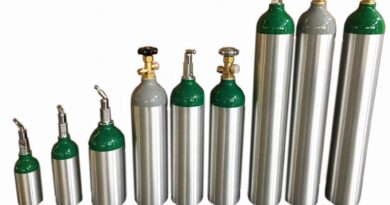When Blood Pressure is High Symptoms
When blood pressure is high, there are usually no symptoms. However, if your blood pressure is extremely high, you may experience a headache, shortness of breath, or nosebleed. If you have any of these symptoms, it’s important to see your doctor right away.
High blood pressure can be dangerous and needs to be treated.
If you have high blood pressure, it is important to be aware of the symptoms so that you can get treatment as soon as possible. High blood pressure can cause a variety of symptoms, including:
• headaches
• dizziness
• shortness of breath
• chest pain
If you experience any of these symptoms, it is important to see a doctor right away.
High Blood Pressure – Causes, Symptoms and Treatment Options
How Do You Feel When You Have High Blood Pressure?
It’s normal to feel anxious or even panicked when you receive a high blood pressure reading. After all, hypertension is often called the “silent killer” because it usually has no symptoms. But once you know that your blood pressure is high, you can take steps to lower it and reduce your risk of heart disease, stroke, and kidney failure.
If your blood pressure is elevated, you may experience:
-Anxiety
-Palpitations (an irregular heartbeat)
-Shortness of breath
-Nausea or vomiting
-Sweating
What are the 5 Symptoms of High Blood Pressure?
If you have high blood pressure, you may not have any symptoms. That’s why it’s important to get your blood pressure checked regularly. If your blood pressure is very high, there are a few things you might notice:
1. A severe headache that doesn’t go away
2. Dizziness or lightheadedness
3. Nausea or vomiting
4. Chest pain or shortness of breath
What are the Top 10 Symptoms of High Blood Pressure?
If you have high blood pressure, it means that your blood is flowing through your arteries at a higher than normal pressure. This can damage your arteries and increase your risk for heart disease, stroke, and kidney disease.
The top 10 symptoms of high blood pressure are:
1) headaches
2) chest pain
3) shortness of breath
4) dizziness or lightheadedness
5) nausea or vomiting
6) vision problems
7) fatigue or weakness
8) irregular heartbeat
9) swelling in the ankles, feet, legs, or abdomen
10) increased urination (frequency or urgency).
What Happens When Your High Blood Pressure is High?
If your blood pressure is high, it means that the force of your blood against the walls of your arteries is too high. This can damage your artery walls and lead to serious health problems, including heart disease, stroke, and kidney failure.

Credit: www.express.co.uk
What Causes High Blood Pressure in Young Adults
High blood pressure, also known as hypertension, is a condition in which the force of your blood against the walls of your arteries is too high. This can lead to serious health problems, such as heart disease, stroke, and kidney failure.
There are many factors that can contribute to high blood pressure, including genetics, diet, stress, and lifestyle choices.
However, one of the most common causes of hypertension in young adults is obesity.
Obesity puts extra strain on your heart and blood vessels and can cause them to harden and narrow over time. This increases your risk for high blood pressure.
In addition, obese people often have high levels of inflammation in their bodies which can further damage their arteries and lead to hypertension.
If you are overweight or obese, losing even a small amount of weight can help lower your blood pressure significantly. In addition to weight loss, other lifestyle changes that can help reduce your risk for hypertension include eating a healthy diet low in salt and fat, getting regular exercise, managing stress effectively, and avoiding tobacco use.
High Blood Pressure Symptoms in Women
If you’re a woman, you may be more likely to develop high blood pressure earlier in life than men. And once you have it, you’re more likely to have complications. That’s why it’s important to know the signs and symptoms of high blood pressure in women, so you can get treated early.
The first thing to understand is that there are often no symptoms of high blood pressure. This is especially true in the early stages of the disease. But as your blood pressure starts to rise, you may experience some of the following symptoms:
Headaches: High blood pressure can cause headaches, particularly at the back of your head.
Dizziness or lightheadedness: When your blood pressure is too high, your heart has to work harder to pump enough oxygen-rich blood through your body. This can sometimes lead to dizzy spells or lightheadedness.
Blurred vision: If your blood pressure is consistently high, it can damage the small arteries that supply blood to your eyes, leading to blurred vision. In severe cases, this can lead to blindness.
Nosebleeds: High blood pressure can cause nosebleeds because it weakens and damages the tiny vessels in your nose.
If you experience any of these symptoms on a regular basis, be sure to see your doctor so they can check your blood pressure and begin treatment if necessary.
What Causes High Blood Pressure in Men
High blood pressure is a condition in which the force of your blood against your artery walls is high enough that it may eventually cause health problems, such as heart disease. Blood pressure is determined both by the amount of blood your heart pumps and the amount of resistance to blood flow in your arteries. The more blood your heart pumps and the narrower your arteries, the higher your blood pressure.
There are many possible causes of high blood pressure in men, including:
• Obesity: Carrying extra weight can increase the amount of work required by your heart to pump blood throughout your body. In addition, fatty tissue can release hormones that can constrict (narrow) your arteries, further raising your blood pressure.
• Physical inactivity: A sedentary lifestyle can lead to obesity and also raises the risk for other conditions that contribute to high blood pressure, such as diabetes.
• Smoking: Cigarette smoking damages the lining of your arteries, making them more susceptible to narrowing from built-up plaque. Nicotine also causes a temporary spike in blood pressure each time you smoke.
• Stress: Mental stress and anxiety can cause a temporary increase in blood pressure. However, chronic stress may lead to long-term increases inblood pressure by affecting how wellyour kidneys function or by causing unhealthy behaviors like overeating or smoking cigarettes.
family history of hypertension : If hypertension runs inyour family , you may have an increased risk for developing it yourself .
This may be due to genetic factors or shared lifestyle habits between family members .
How to Reduce High Blood Pressure
If you have high blood pressure, there are things you can do to reduce it. These include making lifestyle changes and taking medication.
Lifestyle changes:
-Eat a healthy diet that is low in salt and fat. -Exercise regularly. -Limit alcohol consumption.
-Quit smoking.
Low Blood Pressure Symptoms
One of the most common questions we get asked is what are low blood pressure symptoms? And it’s a good question, because recognising the signs and symptoms of low blood pressure is vital in order to treat it effectively.
The first thing to understand is that there are different types of low blood pressure, each with their own set of symptoms.
The two main types are:
Hypotension – This is when your blood pressure readings are lower than normal. It can be caused by a variety of factors, including dehydration, certain medications and Endocrine disorders.
Symptoms of hypotension include lightheadedness, dizziness and fainting. If you experience these symptoms, it’s important to seek medical attention as they could be indicative of a more serious condition.
Orthostatic hypotension – This occurs when your blood pressure drops suddenly when you stand up from sitting or lying down.
It’s often caused by dehydration or prolonged bed rest, and can also be a side effect of certain medications. Symptoms include lightheadedness, dizziness and feeling faint when standing up too quickly. Orthostatic hypotension can be dangerous if not treated properly, so if you experience any of these symptoms make sure to see your doctor right away.
Sudden High Blood Pressure With Headache
If you experience sudden high blood pressure with headaches, it is important to seek medical attention right away. This could be a sign of a serious condition called hypertensive emergency.
Your blood pressure is considered high if it is consistently above 140/90 mmHg.
A hypertensive emergency is when your blood pressure rises quickly and severely, often reaching 180/120 mmHg or higher. This can lead to a number of potentially dangerous health problems, including stroke, heart attack, and kidney damage.
If you have sudden onset high blood pressure with headaches, it is crucial that you call 911 or go to the nearest emergency room immediately.
Treatment for this condition will likely include intravenous medications to lower your blood pressure as well as close monitoring by medical staff. If left untreated, hypertensive emergencies can be fatal.
Diastolic Blood Pressure
Diastolic blood pressure is the pressure in your arteries when your heart rests between beats. It’s normal for this number to be lower than your systolic blood pressure, which is the number that’s measured when your heart contracts. A healthy diastolic reading is usually 60 or less.
If your diastolic blood pressure numbers are consistently high, it means that your heart has to work harder to pump blood through your arteries. This can damage your heart and lead to health problems like heart disease, stroke, and kidney disease.
There are a few things you can do to lower your diastolic blood pressure:
-Exercise regularly
-Eat a healthy diet
-Reduce stress
-Limit alcohol intake
-Quit smoking
If you’re concerned about your diastolic blood pressure numbers, talk to your doctor.
They can help you develop a plan to get them under control and improve your overall health.
High Blood Pressure Numbers
What do high blood pressure numbers mean?
If your doctor says you have high blood pressure, it means that the force of blood against your artery walls is higher than it should be. Your blood pressure reading has two numbers.
The first (systolic) number represents the force at which your heart pumps out blood with each beat. The second (diastolic) number measures the force of blood flow when your heart rests between beats. A normal systolic reading would be less than 120, and a normal diastolic reading would be less than 80.
If either one of these numbers is too high, you have high blood pressure.
High blood pressure doesn’t usually have symptoms, so you may not know that you have it. That’s why it’s important to get your blood pressure checked regularly by a doctor or nurse.
If left untreated, over time, high blood pressure can damage your arteries and lead to serious health problems such as heart disease, stroke, and kidney failure.
There are things you can do to lower your risk for developing high blood pressure or to help control it if you already have it: eat a healthy diet; exercise regularly; maintain a healthy weight; avoid tobacco use; limit alcohol consumption; and manage stress in positive ways such as relaxation techniques or regular physical activity..
Conclusion
When blood pressure is high, it can be dangerous. Symptoms of high blood pressure include headaches, dizziness, and nosebleeds. If you experience any of these symptoms, it is important to see a doctor right away.
untreated high blood pressure can lead to serious health problems such as heart disease and stroke.




